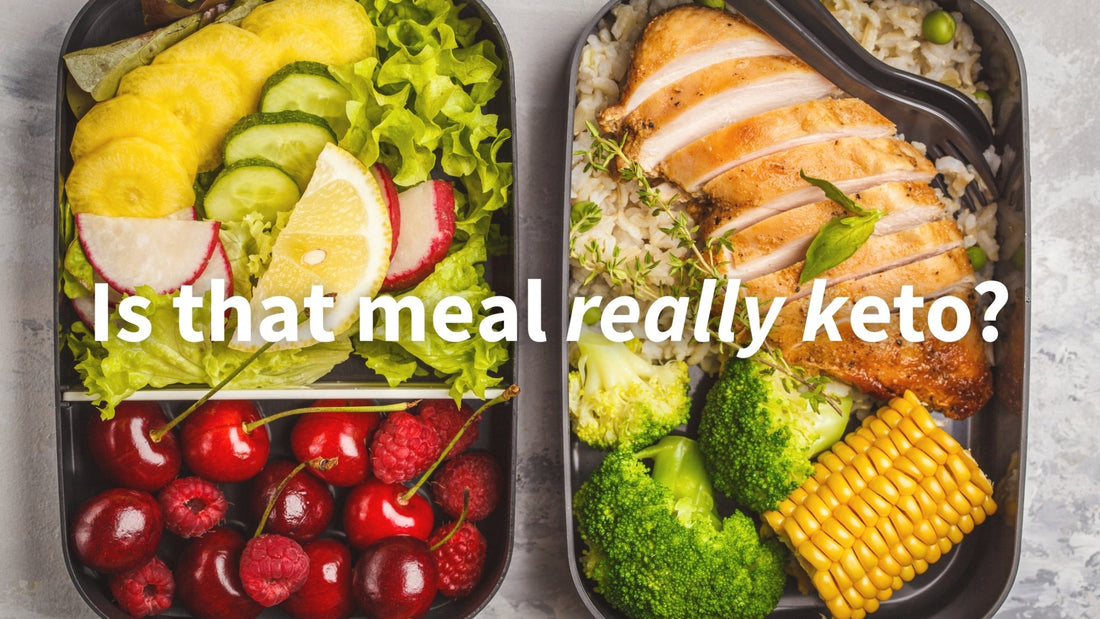The keto diet has become increasingly popular in recent years as more and more people strive to lose weight and maintain health.
But how do you know which meals are truly ketogenic? By understanding the ratio of macronutrients in your meal, you can easily determine which meals fit into the keto lifestyle.
Let’s break down what that means.
Macronutrients Explained
When we talk about the ratio of macronutrients, we are referring to carbohydrates, proteins, and fats.
All three of these provide energy for our body, but they also have distinct roles that affect our overall health and well-being.
Carbs act as a fuel source for our bodies; they provide energy for physical activity and mental tasks.
Proteins help build muscle and repair tissue, while fats provide essential fatty acids and play an important role in hormonal balance.
On a keto diet, the ideal macronutrient ratio is 5-10% carbs, 20-30% protein, and 65-75% fat. This ensures that your body is getting enough fats to stay in a state of ketosis while still receiving adequate calories from proteins and carbs.
It's important not to go over your protein and carbs as they might hinder your state of ketosis. Many people or meal companies may think because a meal is low-carb it is automatically keto, but this is not the case. Over doing it with protein can also affect your body's ability to achieve ketosis.
What Makes a Meal Keto Friendly?
The cornerstone of the ketogenic diet is reducing carbohydrate intake to less than 50 grams per day (or around 25 net carbs). This means avoiding sugary foods like candy and soda, as well as starchy carbohydrates like bread, pasta, and potatoes.
The best way to ensure that a meal is keto friendly is by reading the nutrition label before you buy or prepare it. Look out for high sugar content (over 5g per serving) as well as high carb content (over 20g per serving). Additionally, watch out for meals that are low-carb but very high in protein.
When in doubt, opt for fresh ingredients over pre-packaged ones – they'll typically have fewer added sugars and carbs.
Meals that Fit in Keto Macros
Here are three examples of meals that fit into the keto macros:
-
A breakfast of two eggs fried in butter, with a side of bacon and avocado slices.
This meal contains healthy fats from both the eggs and bacon, plus plenty of protein from the eggs and bacon.
The avocado adds additional healthy fats and fiber for extra satiety. This meal contains about 16 grams of total carbs and 35 grams of fat, making it perfect for people following a strict ketogenic diet.
-
Lunch can be as simple as a salad made with mixed greens, tomatoes, cucumbers, olives, or artichoke hearts, topped with grilled chicken or salmon for added protein.
This salad offers plenty of fresh vegetables along with healthy fats from either the chicken or fish, plus added protein from the meat or fish.
With just 10-12 grams of carbohydrates per serving (depending on what types of vegetables you use), this is an excellent choice for someone following a low-carbohydrate diet plan like keto.
-
For dinner you could have a piece of grass-fed steak served with steamed broccoli and sautéed mushrooms in olive oil and garlic butter sauce.
This meal contains healthy fats from both the steak and olive oil plus protein from the steak itself while still being very low in carbohydrates - only 7 grams per serving!
Again this is an excellent option for those following a ketogenic diet plan who want to get all their macronutrients without going over their carb limits for the day!
Meals that Don't Fit in Keto Macros
On the other hand here are some examples of meals that don’t fit in keto macros:
-
A bowl of cereal with milk – this meal is too high in carbohydrates to be considered “keto-friendly” since cereal typically contains anywhere between 20-40+ grams of carbohydrates per serving depending on what type it is!
Plus milk adds another 8-10 carbs per cup so this meal would not be suitable for someone trying to stay within their daily carb limit on a strict ketogenic plan!
-
A burrito filled with rice, beans, cheese, lettuce & sour cream – again this meal is far too high in carbohydrates due to all its ingredients containing at least 10-15g carbs each!
Plus adding sour cream adds another 4g carbs per tablespoon so this would definitely not be suitable if you’re looking to stay within your daily carb limit while still enjoying delicious meals!
-
An Italian dish such as spaghetti & meatballs – while this may seem tempting because it tastes so good it, unfortunately, does not fit into your daily carb limit since one cup of cooked pasta noodles contains about 40g carbs alone & adding meatballs bring up your total carbohydrate count even further!
So if you’re looking for something delicious but still want to stay within your daily carb limits then look elsewhere!
Tips for Making Keto Meals Easier
Making sure your meals are keto-friendly doesn't have to be difficult. Here are some tips for making it easier:
Meal prep ahead of time – This will save you time when it comes to cooking healthy meals throughout the week. Try cooking multiple servings at once so you have leftovers for lunch or dinner during the week.
Plan ahead – Planning out each meal ahead of time will help ensure that you stick to your nutrition goals while still enjoying delicious food!
Take a few minutes each Sunday evening to plan out all of your meals for the week ahead so there's no scrambling come dinnertime.
Use low-carb alternatives – There are plenty of low-carb options available nowadays that can help make your meals more interesting without adding unnecessary carbs or sugars.
Some examples include using cauliflower instead of rice or zucchini noodles instead of pasta. You can also try using almond flour in place of regular flour when baking treats!
Get creative with spices & herbs – Experimenting with different spice combinations can add flavor without adding extra carbs or sugar. Plus, herbs like basil and oregano offer additional health benefits too!
Summary
In conclusion, understanding how to calculate macronutrient ratios is key when it comes to following a keto diet correctly.
By analyzing your macros before digging into any meal or snack items, you can ensure that you are getting enough healthy fats while avoiding too many proteins relative to fat content—allowing you to remain in nutritional ketosis!
If you want more information about how macronutrient ratios work on the keto diet for optimal health benefits, our keto expert can help guide you along your journey!

